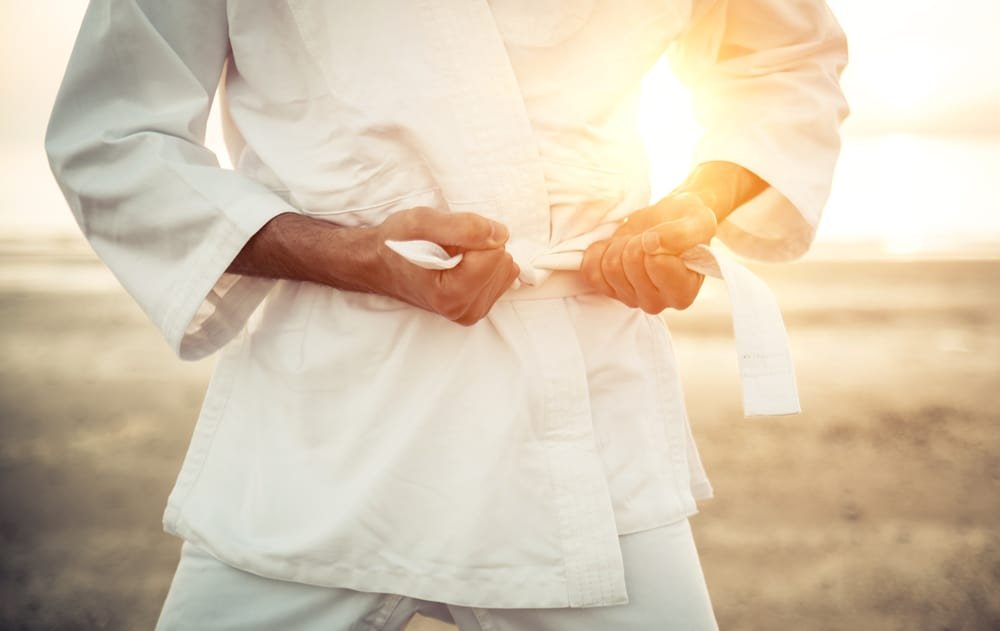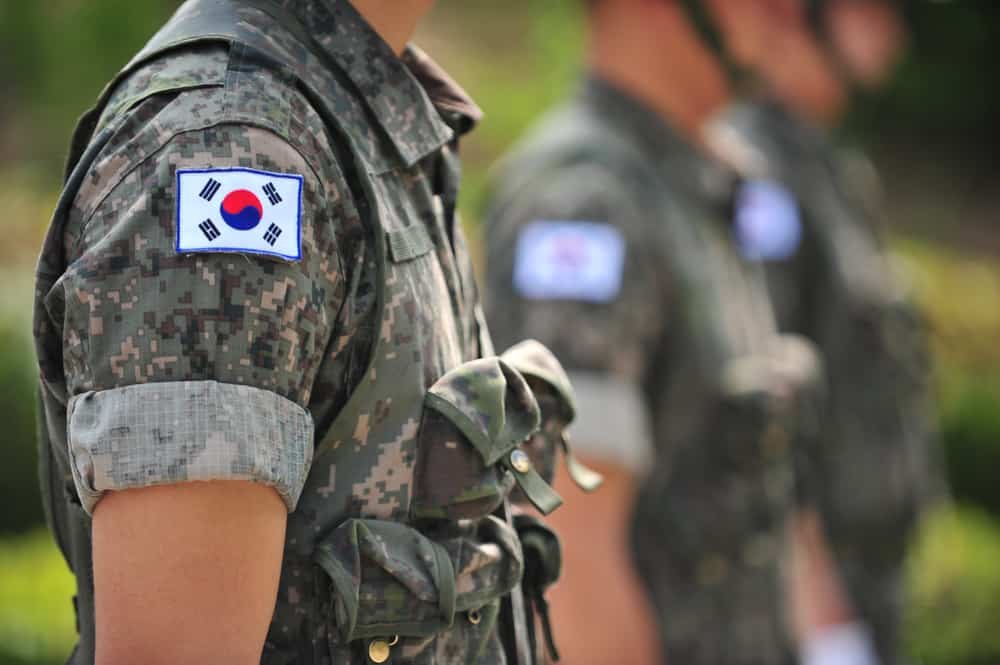
If you are interested in doing Taekwondo or sending your kids for lessons, you probably want to know a bit more about this combat sport. By knowing a few Taekwondo facts, you can approach classes with a bit more understanding and purpose.
If you Google search for Taekwondo facts, you will be presented with hundreds of sources mentioning a few facts here and there. Below I have created a list of the most notable facts on the discipline – in my opinion at least. See the full list of facts below.
Are you ready to learn a bit more about Taekwondo, where it is from, and what it is all about? If you are, let’s jump right in:
These are 25 plus facts about Taekwondo.
1. An Olympic sport.
Taekwondo is one of few martial arts entered as a full medal Olympic sport. It featured at the 2000 Sydney Olympic Games.

2. Practiced by millions around the world.
It’s estimated that somewhat less than 100 million people practice the Korean art of Taekwondo globally. The art is practiced in more than 200 countries, and millions of practitioners in these countries already have black belts.
3. Originated in Korea over 2,000 years ago.
Most people assume that Taekwondo comes from Japan, but it does not. It actually originated over 2000 years ago in Korea.
Several sources show that Taekwondo only made its way to the United States in the 1950s and 1960s. It was used to train US soldiers at a variety of American military bases. While it was quite exclusive when it was first released, Taekwondo is now easily accessible to everyone globally.

4. Modern Taekwondo was created by Korean General Choi in the 1940s.
Modern Taekwondo was created by Korean General Choi Hong Hi in the early 1940s. It is said that the art includes elements of Taekyon and Karate.
5. It’s officially a national martial art.
Taekwondo is actually the national martial art of South Korea.
6. Taekwondo ranks and belts are not standardized.
Ranks and belts used in this martial art usually vary within the style, system, as well as schools.
7. The white belt signifies…

The white belt is a symbolizes purity, as well as the open-mindedness that a student needs to have to learn. It is the first of all the Taekwondo belts.
8. The black belt means…
The black belt represents all of the belt colors and is symbolic of a student’s commitment to the value system. For many, the black belt is a sign of a new beginning where students can use the tools they have learned in Taekwondo over the years in life.
9. An effective form of weaponless self-defense.
Taekwondo is an effective form of weaponless self-defense that includes blocks, kicks, punches, and strikes. A student’s only weapons are his hands and feet.
10. A Taekwondo school is referred to as ‘Dojand’.
“Dojang” is the name of the Taekwondo practice area within the school. It loosely translates to “gym” or “Taekwondo School”. The Dojang has a padded floor with red and blue patterns on them. Some Taekwondo classes held in halls or hired spaces may not have a traditional-looking Dojang.
11. The Taekwondo uniform is called ‘Dobok’.

The white uniform that Taekwondo students wear is called a “Dobok. If you see a colored uniform, it usually denotes that an instructor is on a particularly high level. The uniform is loose fitting for ease of movement and comfort.
12. Color belts & black belts
When practicing Taekwondo, positions are usually focused on junior (color belts) and senior segments (black belts). There are also under study and teacher segments. If you want to become an instructor, you will need to work your way through all of the belt colors and attend instructor training under a certified instructor.
13. Popular among celebrities.
Taekwondo is not just for the average person. It seems to be a preferred sport of many celebrities, including Chuck Norris, Jackie Chan, and Jean Claude Van Damme. Next time you see Chuck Norris doing a perfect roundhouse kick on your television screen; consider that he owes his technique to Taekwondo training.
14. A simple scoring system.
The Taekwondo scoring system is relatively simple and easy to understand. If you are learning the art or, sending your kids for classes, it is important to understand how scoring works. For a basic attack on an opponent’s torso, players get one point. For a spinning kick that targets the opponent’s torso, players get two points. And for a kick to the head, players get three points.
15. It’s a martial art used in the military.

The South Korean military trains its forces with Taekwondo. The art was developed to teach Korean military members how to defend themselves during times of war. It was also hoped that regular exercise would ensure that they remained fit and healthy even when off duty. While it was used as such, it was and is highly effective.
16. Students around the world must learn basic Korean words.
The Korean language is used for giving commands in the Dojang. Students are expected to familiarize themselves with these commands while learning the art of Taekwondo.
17. Students are taught the principles and philosophy of Taekwondo.
While learning Taekwondo, students are taught the principles, as well as the philosophy of martial art. These principles are used in the Dojang but also in daily life. Students are expected to allow the principles of Taekwondo to positively influence their character and daily interactions too.
18. Taekwondo means ‘the way of the foot and fist’.
Most people find the meaning of the word Taekwondo to be quite interesting. It directly translates to “the way of the foot and fist”, and this is probably because of the kicking and punching that the sport focuses on. ‘Tae’ translates to “destroy with feet” and ‘Kwon’ translates to “to strike”. The term ‘Do’ translates to “way”.
19. Injuries are part of Taekwondo.

Injuries are part of practicing and competing in Taekwondo; however, these injuries are usually minor. Many students experience strains and muscle pulls in their legs as well as bruising. More severe injuries are very rarely seen.
20. A versatile martial art.
When learning Taekwondo, you can expect to learn a series of moves that can be both martial and combative. The system that is taught to students includes a variety of blocks, punches, kicks, and strikes. Students are also taught to fall and throw.
21. It’s more than just a martial art.
Taekwondo is not all about physical training and fitness. It is also about learning goal setting and discipline. Students of Taekwondo take away far more from the sport than just learning a skill of combative self-defense. The principles are designed to help students develop into well-rounded and balanced individuals. It is expected that learning the principles will enhance a student’s life.
22. The World Taekwondo Federation is in …
As expected, the World Taekwondo Federation (known now as ‘World Taekwondo’) is found in South Korea and is the most prominent organization of this martial art in the world.

23. It promotes an equal and fair fight.
In Taekwondo competitions, opponents must fight in same-sex matches. Opponents must also be in the same weight category to ensure that the fight is fair and that skill and strength can be effectively monitored.
24. Protective gear is often used during matches.
There are a few items of equipment that a Taekwondo student must use when in a tournament or a match. These items of equipment include head guards, a chest protector, guards on the forearms, and protective gear for the hands, guards for the shins, a groin guard, and a mouthguard.
25. Taekwondo practitioners are well-rounded athletes.
Most Taekwondo classes will involve training students to develop strength, agility, flexibility, and speed. This is achieved with a series of cardio exercises, resistance exercises, and training drills.
26. It takes a lot of time, practice, and dedication to excel in this martial art.
Students are encouraged to practice their Taekwondo skills and techniques at home. Simply practicing in class is not enough to get to the level that a student needs to in order to progress from one belt color to the next. The practice requires dedication from students in terms of time as well as lifestyle.
Also, students are encouraged to eat healthily and live mindfully while practicing Taekwondo.
27. A pioneer martial art in gender equality.

Taekwondo is considered incredibly progressive as it was one of the very first martial arts to include women in training.
28. Taekwondo masters have more than great combat skills.
To be a Taekwondo master, you must put a lot of effort into training. Ideal candidates for masters are those who have developed skills in deep concentration, fitness, combat strategy, and safe self-defense techniques.
In closing
Hopefully, you have learned something new with these fun Taekwondo facts. If you did not know these facts before, probably, these will help you to have a better understanding of Taekwondo, where it comes from, and what it is all about.
